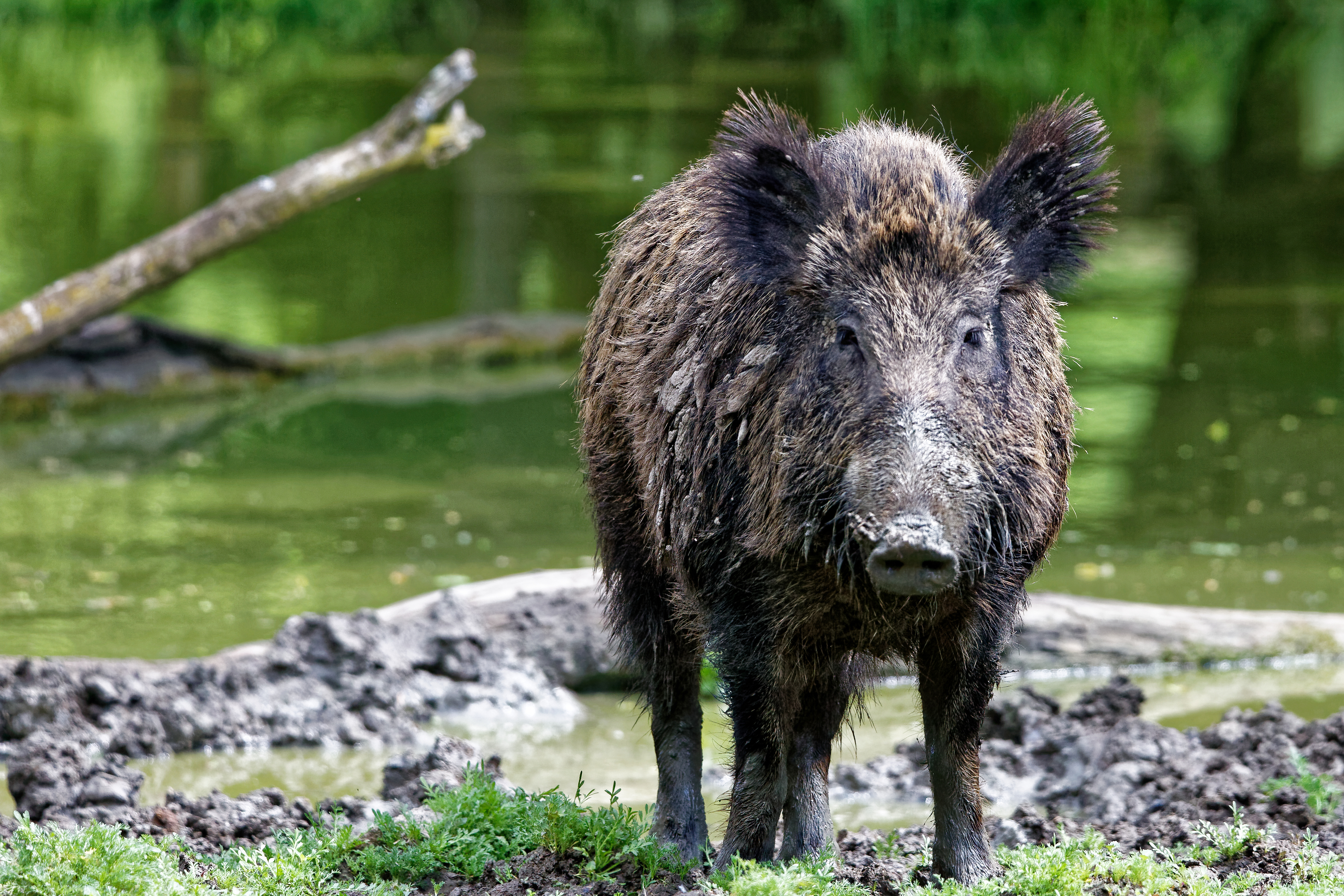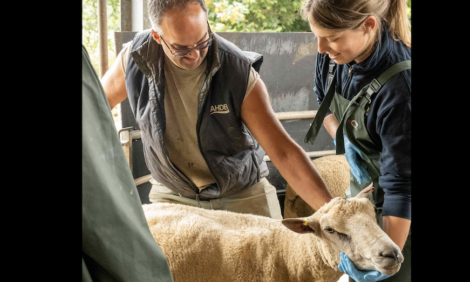



Measures implemented to combat African swine fever in Germany
Measures to combat the ASF outbreak are being implemented in the state of Brandenburg, Germany.
On September 10, the outbreak of the notifiable animal disease African swine fever in a wild boar found dead was officially established in the Sembten district in the Spree-Neisse district. The infected carcass is a 2 to 3-year-old brook in a badly decayed state, which was found on a harvested corn field at a distance of about seven kilometers from the German-Polish border in the immediate vicinity of the district border with Oder-Spree. Based on the state of the carcass, an initial assessment suggests that the carcass remained at the site for two to four weeks, according to the Ministry of Social Affairs, Health, Integration and Consumer Protection of the State of Brandenburg.
After farmers and hunters were informed of the situation, the core zone, including a radius of at least three kilometers around the location where the first infected wild boar carcass was found, was completely fenced in with an electric fence on Saturday. Then, a targeted search for further dead wild boars intensified. Simultaneously, the hunting of wild boar has also significantly intensified.
The districts of Spree-Neisse, Oder-Spree and Dahme-Spreewald affected by the endangered area have published their general animal disease directives with all the necessary measures. At the same time, the state government is in close contact with farmers and pig keepers, who fear the serious economic consequences from the ASF outbreak.
“We are only at the beginning of the ASF outbreak. The response was immediate and comprehensive," said Consumer Protection Minister Ursula Nonnemacher said after a cabinet meeting. "We must continue to proceed prudently."
The plan is to implement a targeted and systematic fall game search. If more infected wild boars are found around the provisionally established core zone, it will be enlarged accordingly.
"In this phase, we must avoid anything that unnecessarily scares wild boars. Above all, this includes harvesting and hunting," said Nonnemacher. "Only when we know the actual extent of the infection can we secure the core zone with a solid fence so that we can then begin intensive hunting. The measures ordered are painful for many farmers in the affected region. But they are necessary to fight the ASF in a reasonable amount of time."
Agriculture Minister Axel Vogel said once the fence has been built, the state forestry team will be intensively supporting the fall game search, using drones and search dogs. Working together with the Ministry of Consumer Protection, they are in close contact with the agricultural associations, farmers that keep animals in the area and those acutely affected by the harvest stop. They are also speaking to slaughterhouses and meat processing companies to keep sales channels open for local Brandenburg companies.
Immediately after the ASF outbreak in western Poland in mid-November 2019, the Ministry of Agriculture asked the 10,000 hunters to increasingly send in samples of fallen and accidental game for examination. For the hunting year 2019/20, Erlegungsprämien (hunting premiums) have been paid at a value of over one million euros.
Core zone and endangered area
A core zone with a three-kilometer radius with an area of approximately 40 square kilometers was set up and fenced in around the site, and an endangered area with a radius of approximately 20 to 25 kilometers or approximately 1,100 square kilometers was defined.
To combat ASF in wild boar populations, the following immediate measures were ordered by the districts in the endangered area or are applicable by law:
For those authorized to hunt
- An intensified case game search is to be carried out.
- Duty to notify fallen game: every wild boar found dead must be reported to the veterinary office, stating the place where it was found. The labeling, sampling, recovery and safe disposal is to be carried out exclusively by trained and authorized personnel.
- It is a hunting ban for all species.
- Wild boars may not be brought into the country or exported from the endangered area.
- Killed or dead wild boars or parts thereof, as well as objects with which wild boars may have come into contact, may not be brought into a pig holding.
For pig farmers
- The number of pigs kept must be reported to the veterinary office immediately, specifying their type of use and their location.
- Dead and febrile pigs must be examined immediately for African swine fever.
- The pigs must be segregated in such a way that they cannot come into contact with wild boars.
- Feed, litter and other objects that pigs can come into contact with must be kept inaccessible to wild boars.
- Temporary ban on the use of agricultural and forestry areas.
- Hay, grass and straw that has been obtained in the endangered area may not be used for feeding to or as litter or occupation material for pigs. This does not affect hay, grass and straw that was harvested earlier than six months before the endangered area was designated.
- It is prohibited to move pigs from a holding that is located in an endangered area. Exceptions must be applied for in writing to the competent veterinary authority.
For everyone
- In the core zone, entering the forest and the open landscape is prohibited.
- The use of agricultural and forestry areas is prohibited.
- Dogs are not allowed to run around freely in the endangered area (leash obligation).
- Events with pigs in the endangered area are prohibited (e.g. farm festivals, markets, etc.).
- Persons who have come into direct contact with wild boars must carry out appropriate cleaning and disinfection measures.
The orders and measures are based on the Swine Fever Ordinance in conjunction with the Animal Health Act.
African swine fever background
African swine fever (ASF) is a notifiable animal disease which is dangerous for domestic and wild boars and which is almost always fatal and incurable. The early detection is decisive for the delimitation of the infected area and the measures to be ordered. All wild boars found dead, regardless of whether they have fallen or accidentally damaged, must therefore be sampled immediately.
- ASF cannot be transferred to humans - neither through the consumption of pork, nor through direct contact with animals.
- For domestic and farm animals other than pigs, the ASF does not pose a threat.
- The ASF pathogen is extremely resistant and can be detected in infected animal carcasses for many months.
- In order to prevent the infection of healthy animals and thus to minimize the risk for the domestic and wild boar populations, the animal carcasses or the remains of them are then harmlessly disposed of and the place of discovery is disinfected.
- In this country (Germany), transmission occurs through direct contact with infected animals, the ingestion of food waste or pork products and other indirect transmission channels.
- Since the virus remains infectious for an extraordinarily long time, it can also be caused by contaminated objects such as B. tools, shoes, clothing or transport vehicles are widely used. For this reason, travelers, walkers, mushroom pickers and hikers as well as transporters should behave carefully and responsibly and observe hygiene measures.
- In domestic pigs and wild boar, the infection leads to very severe general symptoms such as fever, weakness, unwillingness to eat, movement disorders and breathing problems. Diarrhea and a tendency to bleed may also occur. Sick animals sometimes show a reduced willingness to flee or other abnormalities, such as reluctance to move and disorientation.
- The incubation period, i.e. the time between infection and the first symptoms of the disease, is usually four days, but can generally be between two to about 15 days.
- In almost all cases, the disease leads to the death of the pig within a few days.







